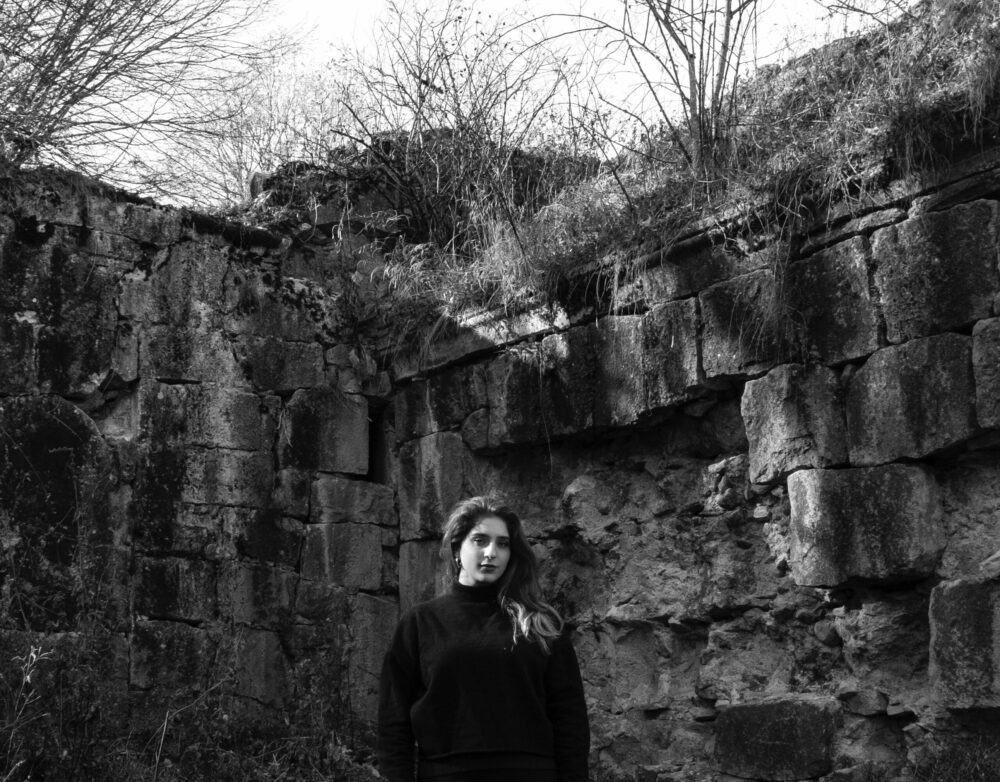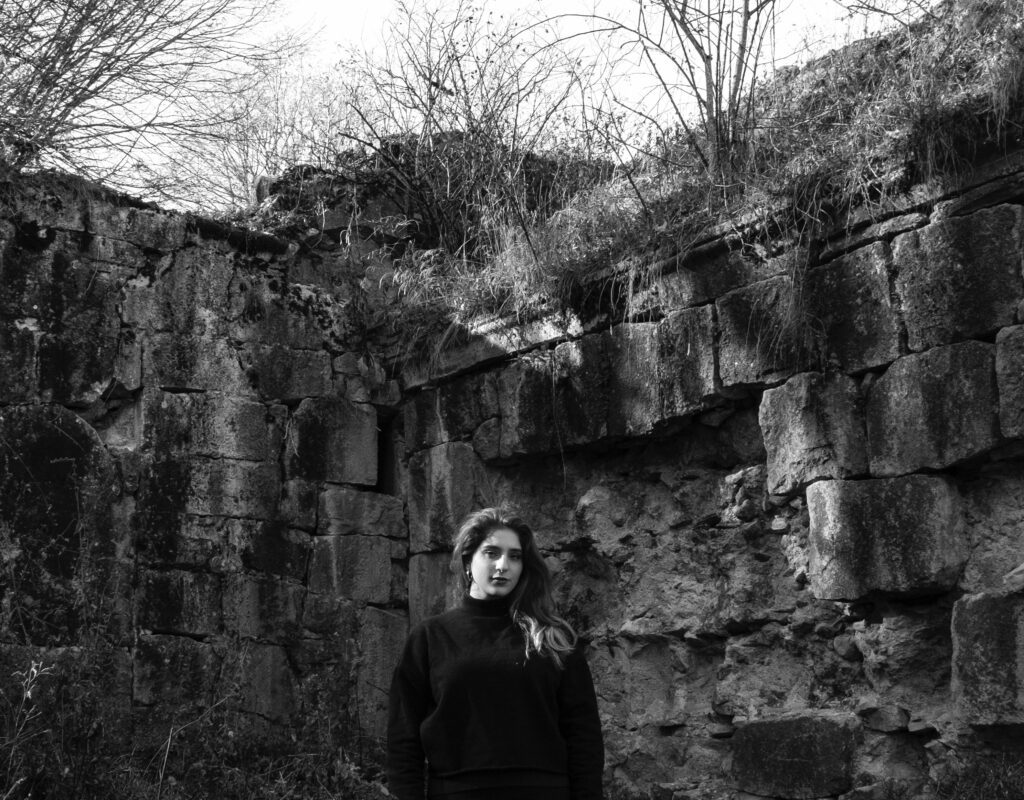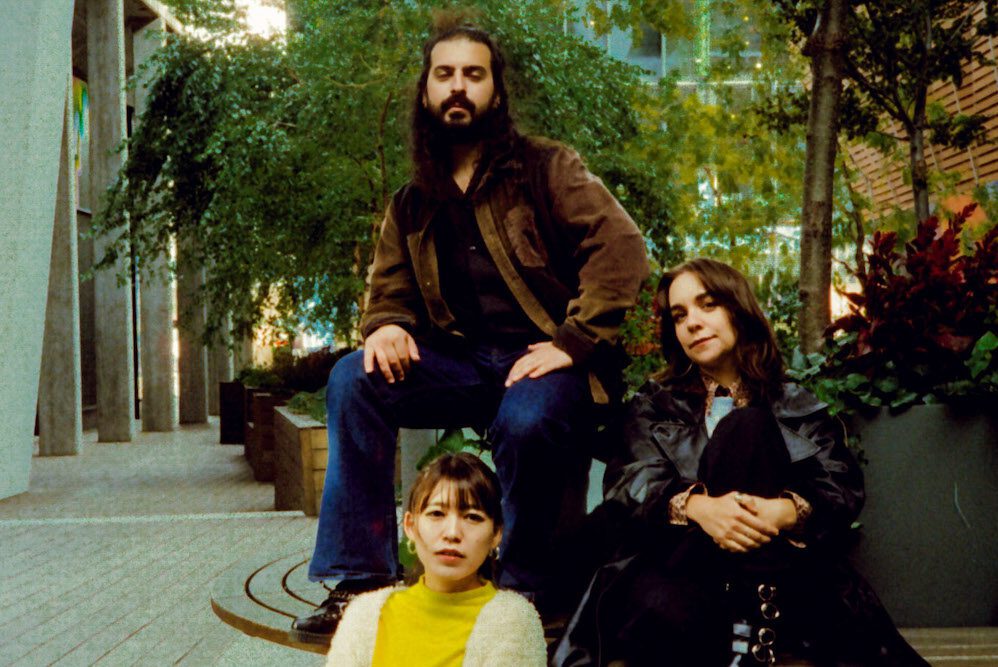Lara Sarkissian Uses Electronic Music to Highlight Her Armenian Heritage


“I always wanted to push Armenian sounds,” says Lara Sarkissian. “I always thought of the future and how I could push Armenian sounds into the future in very experimental and untraditional ways and how that can fit within this electronic music and electronic dance music.”
Sarkissian is a San Francisco-based producer, composer and DJ, as well has one-half of the duo behind the party series and record label Club Chai. In her work, she likes to manipulate the sounds of traditional Armenian instruments, like the duduk, a woodwind made of apricot wood, and incorporate them into electronic music productions. In late October, “Fortress in the Clouds,” an intense techno track, appeared on SOS Music Vol. 1, a compilation from L.A.-based label SOS Music to benefit Transgender Law Center, Downtown Women’s Center and Women’s Refugee Commission.
“It’s interesting to experiment with these old and ancient sounds and have your take on it,” says Sarkissian. “It’s like having a conversation with it in your own way.”
On November 26, her soundscape for “Thresholds,” a collaboration with video artist Jemma Woolmore commissioned by the Institute for Sound and Music Berlin for the ISM Hexadome, will be released on vinyl. “I was really inspired by the concepts behind aural architecture. I used a lot of field recordings in Armenian churches and monasteries,” says Sarkissian of the project. “I really love how Armenian monasteries are built in a certain way to house certain kinds of sounds, like the choir with the voice and how it bounces to the ceiling and back, kind of like you’re speaking to God and the powers above.”
That inspiration suited the ISM Hexadome, a 360-degree audio-visual installation that exhibited in Berlin, Montreal and San Francisco, as well as MASS MoCA in North Adams, Massachusetts, where the recording for the release stems. “I looked at this dome structure for ISM as, in parallel, like a monastery. I thought that it would be really cool to take these samples, like these Armenian environmental sounds or these sounds that I recorded in Armenian monasteries and at my church in San Francisco, and use it in this space and create a whole contemporary electronic score around that.”
Sarkissian started out as a drummer in high school. In college, at UC Berkeley, she gravitated towards film and was making her own experimental shorts. Then she took a sound design class while studying abroad in Copenhagen and was impressed with how sound could tell a story. “I think that’s when I put the camera down and became more focused on sound and storytelling,” she says. “That’s when I started teaching myself Ableton.” She began producing her own tracks and making edits while also learning how to DJ.
She was inspired by artists of different ethnic backgrounds who were incorporating their culture into electronic music. “I’m Armenian, but I’m living in diaspora. There’s another kind of Armenian culture that exists here,” Sarkissian explains. “A part of that means being in dialogue and being around other cultures and other diasporas and learning about each other’s struggles and oppression and building solidarity and coalition from that way. I did see that there is a way that you can do that with music and I really enjoyed that.”
In 2016, she and collaborator 8ullentina launched Club Chai as a monthly event series. They started with warehouse parties bringing together San Francisco and Oakland-based artists, with an emphasis on women-identified, non-binary, LGBTQ and POC artists. Through Club Chai, they built up an international network of artists and began touring in the U.K. “I think that a lot of artists and music in general stays within our Bay Area bubble,” says Sarkissian. “Our goal is to connect that with our global audience and people who are doing similar work in other places.”
In August, Club Chai landed a residency on the popular, global online radio station NTS, where you can now hear them monthly. For the October show, Sarkissian focused primarily on Armenian music to call attention to a mounting human rights crisis. On September 27, Artsakh, an ethnic Armenian region in the South Caucuses known internationally as Nagorno-Karabakh, was attacked by Azerbaijan. That led to a six-week battle in the midst of the COVID-19 pandemic where civilian areas of Artsakh were shelled and tens of thousands of people were displaced. An agreement brokered by Russia brought the fighting to a halt, but it also transferred part of this indigenous Armenian land back into the hands of Azerbaijan, leading to further displacement of people and a growing concern for the future of Armenian cultural landmarks in the region.
For Sarkissian, who has taught in both Armenia and Artsakh, this hit close to home. “I think that I was, personally, in a really frustrated place,” says Sarkissian. She wanted to let the music community know what was happening, but wasn’t sure of how to do that. “Obviously, music brings people together and understanding stories of other people’s culture through sound is a huge thing,” she says.
The set included multiple generations of Armenian artists, as well as non-Armenian music. “I wanted to channel grief and solace and have this place where we’re allowed to sit in sadness,” she explains.
Sarkissian says that this devastating time for Armenians has shown how important it is to have artists and scholars, “people who are creating this intersectional language,” bring the ongoing conflict into the light. In the long run, she says, “I think that kind of language is what’s going to help us link with other communities.”
Follow Lara Sarkissian on Facebook for ongoing updates.




